
114 results
-

-

Tech+ Harnessing Technology for Future Practice
- Event by The Architect's Newspaper
Rising complexity in project design and sustainability goals has catapulted digital tools to the forefront of the AEC industry.
-

Material Matters: Embodied Carbon Considerations Impacting Design Practices for Facade Systems, Buildings, and Urban Habitat
- Article by Mic Patterson, PhD, LEED AP BD+C, Ambassador of Innovation and Collaboration
Awareness of embodied carbon impacts is surging like hurricane-driven floodwaters and altering the landscape of everything in its path. What are the implications for buildings, the facade system and urban habitat? FTI is taking this on with its 2019 Forum series.
-

The Perkins&Will Research Journal: Contributions from Practice-Based Design Research
- Article by Kalpana Kuttaiah, Associate AIA, LEED BD+C
Today the design professions still struggle to understand the nature of research in our work. There is a systemic lack of clarity in defining research in design and developing metrics to evaluate the value behind design interventions and applications
-
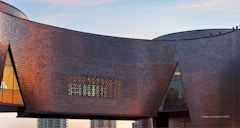
Event Passed
Facade Tectonics Forum: Simulation vs. Reality
The gap between simulated and actual energy performance has hobbled progress towards important carbon reduction goals in buildings and urban habitat. This summit advocates the need for improved energy modeling and the development of best practices, with emphasis on the building façade.
Forum by Facade Tectonics Institute, Inc.
-

Facade Tectonics Forum: HOUSTON
- Event by Facade Tectonics Institute
FTI's celebrated Forum in Houston brought together thought leaders to explore the amplified threats of climate change in the unique urban context of Houston.
-
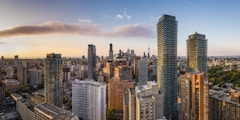
Facade Tectonics Forum: TORONTO
- Event by Facade Tectonics Institute
The sold out 2019 Toronto Forum brought together AECO industry thought leaders to confront themes central to ever-evolving facade technology, themes engaging facade design, delivery, renewal, materiality, sustainability and resilience.
-
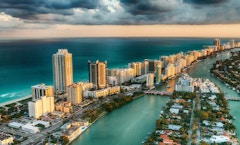
Facade Tectonics Forum: MIAMI
- Event by Facade Tectonics Institute
FTI held its celebrated Forum in Miami with thought leaders to explore the amplified threats of climate change in the unique urban context of Miami.
-

Facade Tectonics Forum: NYC
- Event by Facade Tectonics Institute
.FTI's 2019 NYC Forum was an intimate, provocative and forward-looking dialogue with thought leaders from all sectors of the building industry; owners, architects, consultants, contractors and more.
-
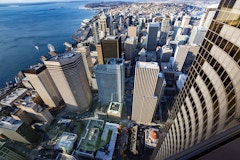
Facade Tectonics Forum: SEATTLE
- Event by Facade Tectonics Institute
FTI's celebrated Forum in Seattle explored the "facade effect" on buildings and urban habitat with industry and academic thought leaders.
-

Optimized Adaptive Re-Use
- Paper by Matthew Parker, Intern Architect John Souleles, Principal
Contemporary building practice represents a disconnect between traditional manufacturing techniques, that favor straight runs and orthogonal… -
Balustrade Design Loads
- Paper by Richard Green, SE, PE, P.Eng, CPEng, IntPE, APEC Engineer, M.ASCE M.IEAust, Founding Principal Andrew Crosby PEng, Principal Terrence McDonnell, Associate Principal
A review of balustrade practices from around the world, and why practices in United States and countries using ICC code/ASCE 7 designs are failing to… -
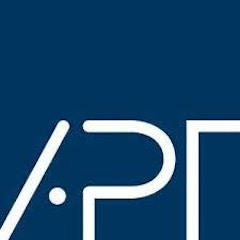
-

The Glass Failure Prediction Model
- Paper by James G. Soules, P.E., S.E., P.Eng., SECB, F. SEI, F. ASCE, Graduate Student, Department of Civil, Environmental, and Construction Engineering Stephen M. Morse, P.E., Ph.D., A.M, ASTM, Assistant Professor of Civil and Environmental Engineering H. Scott Norville, P.E., Ph.D., F. FTI, F. ASCE, F. ASTM, Professor, Department of Civil, Environmental, and Construction Engineering
ASTM E 1300 Standard Practice for Determining Load Resistance (LR) of Glass in Buildings defines the load resistance of a glass construction as being… -

Glazing Design By ASTM E 1300
- Paper by H. Scott Norville, P.E., Ph.D., F. FTI, F. ASCE, F. ASTM, Professor Stephen M. Morse, P.E., Ph.D., A.M, ASTM, Assistant Professor of Civil and Environmental Engineering James G. Soules, P.E., S.E., P.Eng., SECB, F. SEI, F. ASCE, Graduate Student, Department of Civil, Environmental, and Construction Engineering
ASTM E 1300 “Standard Practice for Determining Load Resistance of Glass in Buildings” defines the load resistance of a glass construction as being… -
Glass Balustrade Design
- Paper by Richard Green, PE, SE, P.Eng, CPEng IntPE(Aust), APEC Engineer · Andrew Crosby, PEng · Terrence McDonnell S.E., P.E., P.Eng., SECB
Glass handrail design in the United States lags behind best practice in other parts of the world. There can be as much as a factor of four (4)
-

Control Tower Glass Design
- Paper by Daniel McCormick, P.E., PMP, M.ASCE, Federal Aviation Administration Stephen M. Morse, Ph.D., P.E., M.ASCE, Assistant Professor Scott H. Norville, Ph.D., P.E., F.FTI, F.ASTM, F.ASCE, Professor
ASTM published the first version of ASTM E2461-05: Standard Practice for Determining the Thickness of Glass in Airport Traffic Control Tower Cabs in… -

Reduce, Reuse, Reclad
- Paper by Daniel Nauman, AIA, NCARB, LEED AP, Senior Associate Jessica Santonastaso, Associate Jennifer Sze, RA, USGBC LEED AP, Principal and Director of Special Inspections
Kintsukuroi, the Japanese art of repairing broken pottery with powdered precious metal, is a practice of celebrating the life and history of an… -

Event Passed
–CTBUH 2021 Tall + Urban Innovation Conference
- Singapore
This conference explores and celebrates the very best in innovative tall buildings, urban spaces, building technologies, and construction practices from around the world. Incorporating what was previously known as the CTBUH Annual Awards Event, this conference will see the owner/developers and...
Industry Event by Council on Tall Buildings and Urban Habitat
-

BAU 2021 ON-LINE
- Event by Messe München
BAU is the World's Leading Trade Fair for Architecture, Materials and Systems. It has proven itself as an efficient international contact and business platform for the construction industry.